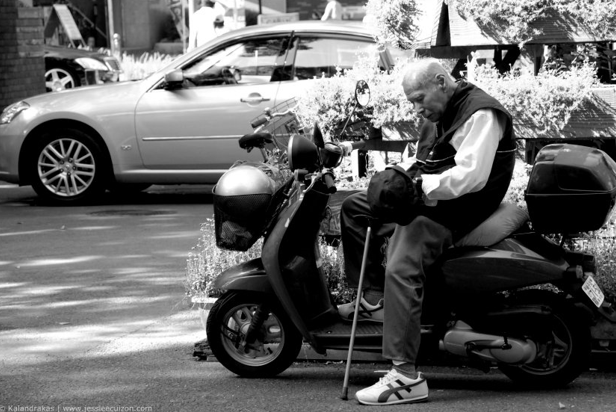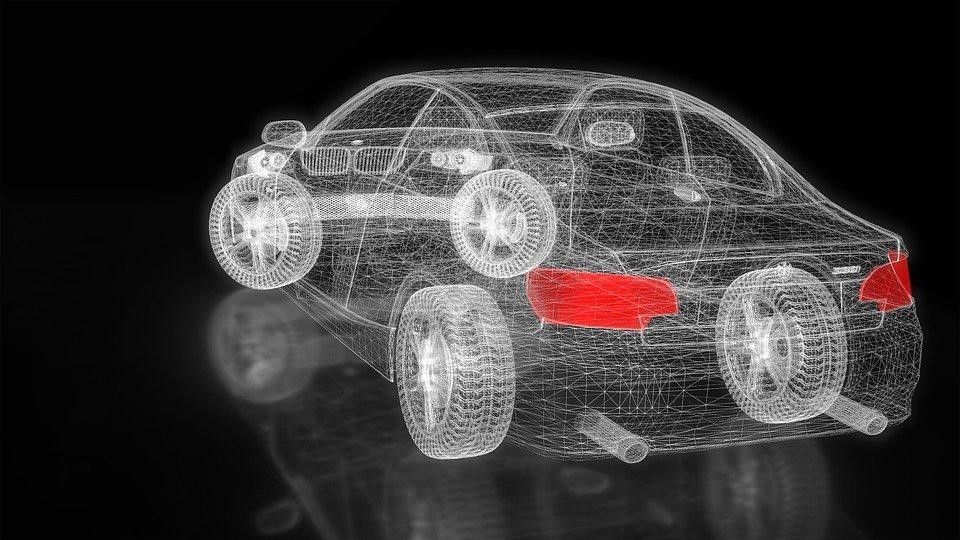
Seniors and Driving: A Guide
Image Credit: StockSnap / Pixabay
There is no denying the freedom of being able to drive whenever and wherever offers. But as people age, taking advantage of this freedom can bring increased risk. As you watch your loved ones grow older, you might begin to question the role you play in weighing their ability to drive, with the risk it brings them. This guide will help you navigate through the occasionally tough conversations of seniors and driving.
By The Numbers
The Federal Highway Administration (FHWA) estimated that in 2019, there were approximately 30 million licensed drivers of age 70 or older (FHWA, 2020). The U.S. Census Bureau estimates the number of drivers 70 and older to nearly double by 2030 (U.S. Census Bureau, 2017). However, fewer miles are driven by people aged 70 and older than those ages 20-69.
The Centers for Disease Control has released similar data, stating “drivers aged 70+ have higher crash death rates per mile driven than middle-aged drivers (aged 35-54).”
Not Just the Age of the Driver, but the Age of the Car
In two reports cited by the Insurance Institute for Highway Safety, drivers aged 70 and older tend to drive older vehicles that lack newer models’ safety and accident-avoidance features. Along with the reduction in income that comes with retirement, older drivers become more and more rigidly comfortable in a particular vehicle and may not be willing to move on to something else, even with the advanced safety features.
In the same reports, studies also showed that older drivers that were willing to move on to a newer model vehicle were less likely to make certain safety features, such as lane departure warning and side curtain airbags, a requirement when selecting the newer model. While this alone does not necessarily have an impact on the skills or abilities of the senior driver, it can make them potentially a lot less likely to escape from an auto accident without injury or even death.

Image Credit: J3SSL33 / flickr
Age and Increased Injury Risk
As our bodies age, they become more susceptible to injury, whether inside a car or not. The confined space of a car, coupled with the speed of driving, adds to the reasoning older drivers, as well as passengers, suffer more injuries in an auto accident than younger people. The bodies of drivers, especially those aged 70 or older, cannot absorb the forces exerted on them during an accident. Generally, it is the older driver themselves or their passenger (typically of nearly the same age) who suffers more significant injuries or death than others involved in the accident. In 2019, of the accidents involving death with drivers 70 or older, it was the older passenger or the older driver themselves who accounted for 73% of those killed.
Age-Related Difficulties with Driving
Even with a rigorous diet and exercise plan, the abilities of certain functions of our bodies deteriorate with age. From a nagging aching back each morning to getting tired earlier in the afternoons, this decline can have dramatic effects on an older driver’s ability to safely operate a car. Certain prescription drugs and medicines the older driver might require may also make these impairments worse.
Physical Issues
Not considering the increased risk of injury or death in an accident, the physical symptoms and issues that come with aging can make driving difficult and, if severe enough, unsafe. The primary cause of these issues is the decrease in strength and flexibility of the driver. Depending on how severe the decline is, the older driver may have difficulty turning their head and neck, pressing hard enough on the brake pedal if a sudden stop is needed, or being able to turn the steering wheel fast enough for evasive action. While normal driving may be unaffected, it’s the actions needed to remain a defensive driver and avoid accidents that will suffer the most impact.
Mental Decline
Just like the decline in physical strength that comes with age, the decline of cognitive abilities, and the ability to quickly react or attention to multiple things at once, will also have a negative impact on an older driver's ability to safely drive a car. Even if the physical strength required to avoid an accident remains, the older driver may not have the reaction time necessary to make the required turn or stop. Also, the increased chance that a distraction will take more of the driver’s attention away only adds to the risk.

Image Credit: Timothy Krause / flickr
Vision
Perhaps most important for safe driving, is having adequate eyesight. Independent of being able to react or having enough strength and motor skills, being able to clearly see what’s around the car is vitally important to safe driving. Even if eyesight tests show the older driver still has a clear vision, the eye lenses may take longer to adjust the focus when moving back and forth between near objects and those that are farther away.
Hearing
One of our senses that is often overlooked when it comes to driving safely, is our sense of hearing. Although we may want to ignore some impatient drivers who might use their horns out of anger, there are plenty of sounds we do want to listen to. Sirens from emergency vehicles as well as horns from drivers who are letting us know of something we may have overlooked are all sounds that might help us avoid an accident. A decline in the sense of hearing negatively impacts one of our sources for accident-avoiding information.
Medication
If the senior driver is taking medication to treat a medical condition, whether acute or chronic, be sure to consult with a physician or pharmacist to see if any side effects may cause any decline in their senses or motor skills. Above what may be shown on a prescription bottle's warning label, a medical professional can tell if the particular medication may bring out certain symptoms that are especially impactful while driving but do not quite meet the threshold for a general warning.
Signs of an Unsafe Elderly Driver To Look For
While some elderly drivers can handle the driving difficulties that are caused by aging, many others are not. Without looking for signs that the elderly driver is no longer able to safely drive, there is an increased chance of an auto accident involving them, or another person. And with their age, that also comes with a higher likelihood of serious injury or even death.
“Third-Party” Observations
Since it might not be possible to always be with the elderly driver, we are limited in how much time we can observe them and look for any warning signs. One indicator, if we aren’t there as a passenger, is to look out for speeding tickets or other traffic violations, as well as any increases in insurance premiums. Of course, this is a more passive way to look for the warning signs of an unsafe elderly driver, but they can provide a detailed insight into declining skills and/or capabilities, especially if they have not had a prior history of such infractions.
Distractions
The cognitive decline that comes with aging, can have a negative impact on an elderly driver’s ability to focus on a primary task, without being easily or seriously distracted. A driver that becomes easily distracted by a phone ringing, a siren from an emergency vehicle, or anything else that might divert their attention, may not notice or react to an impending collision.
Passenger Feedback
Not unlike traffic tickets and increases in insurance premiums, hearing feedback from friends or relatives who have recently been a passenger with an elderly driver, can provide great insight into the driver’s abilities even when you are not there in person, to see.
Driving Habits and Patterns
One of the best ways to observe how safe or unsafe an elderly driver is behind the wheel is by having first-hand observation of how they drive, and what skills have potentially declined. Since we all can have rough or challenging days in anything we do, it might be worth watching them over a few trips to get a complete picture of where their skills and abilities might be at. Some signs to look out for include:
- Coasting for an excessive distance before a stop
- The speed that is too slow or too fast to keep up with traffic
- Straddling lane lines
- Weaving between lanes
- Braking suddenly without reason, or for something far away
Reluctance To Drive
Some elderly drivers may feel ashamed or otherwise embarrassed to admit a decline in driving abilities. Especially if the driver previously had no issue or enjoyed driving, an elderly driver who becomes reluctant or avoids driving is a likely sign of an increased risk in safety if the person continues to drive.
Damage to Car
Noticing damage to the car after it is driven by an elderly driver, may also indicate unsafe abilities on the road. Especially if there is any cognitive decline in the elderly driver, it may take a frequent walk around the car looking for scratches and dents to find out if anything happened. In some cases, it could be simply the elderly driver, who forgot to let you know of the damage. In a worse case, they may have forgotten about the damage, themselves.

Image Credit: BuonoDelTesoro / Pixabay
How to Talk to an Elderly Loved One About Driving
When it is time to talk to an elderly loved one about driving, it’s important to realize the personal implications and impacts any limitations can cause. As the loved one age, the personal freedom of mobility afforded by being able to drive may be an emotionally charged topic that will take delicate wording and conversations. It is important not to be accusatory or demeaning in any way, as they may feel an attack on their freedom. There are a few ways to ease this potentially difficult conversation as well as make positive changes in the lives of all involved by minimizing the risks.
First Ask Questions
It is a good idea to start such a conversation by showing curiosity and a genuine concern about the driving abilities of the senior driver. This will help the conversation be less accusatory, and more out of love and concern. It might be helpful as well, to share some issues you might be having while driving, such as sun glare, night vision issues, etc., to show a level of vulnerability and help create a safe space to talk about such a topic.
Don’t Make It “All or Nothing”
Although we may want to remove all risks involved with our elderly drivers on the road, if the declines in abilities or other risk factors are very minor, trying to keep them off the road entirely may be too far to the extreme, and prove overly detrimental to their mental health.
If there are only a few minor signs that you are aware of, focus on addressing those specifics first. By following that with other signs that maybe haven’t been noticed yet, but may soon, you are bringing the elderly driver into the conversation instead of simply explaining symptoms and then telling them the cure.
Be Open to Hearing Their Concerns, Before Telling Them a Solution
One way to hold a productive and meaningful conversation is to begin talking to them without having a particular solution to a potential limitation in their driving privileges or thinking you know all of their concerns at all. Be open to hearing all of their concerns and when addressing them, collaborate on the solutions instead of solving them. By giving them more agency in how they alternatively get from one place to another without driving themselves, they will take more ownership in the overall decisions and may be less resistant to limitations.
Start With One Conversation, Prepare for More
Along with staying away from accusations or assertions of control, it is also important to avoid any sort of expectations on how the conversation may go or how long it may take to get the point across. First and foremost, keep an open mind and be open to hearing their concerns, such as a feeling of lost freedom or concerns about mobility and transportation.
It will also help to allow them to, once your initial concern is brought up, to guide the conversation, even if unrelated to the specific topic or concerns about their driving. Try to resist the urge to take control of the conversation and keep it on track and focus. Keeping a welcoming and open space for dialogue rather than lecture and response will invite the elderly driver to be more trusting with you and comfortable sharing their own concerns.
Along with the individual conversation, don’t start by expecting all of your concerns and discussions about the warning signs you’ve noticed, which will be over in a single conversation. There are some instances where this occurs. However, offer the elderly driver time to think and reflect on the discussion and offer to have another session in the future once they have time to think and process what they heard. After likely a lifetime of driving, limitations, self-imposed or not, can be a major change.

Image Credit: Wikimedia Commons
Driver’s License Renewal
If the elderly driver is set on continuing to drive, understand that a feeling of a loss to the freedom driving brings them maybe too much to handle. Be open to their requests as well, and consider a way to support them in their decision while helping to reduce the safety risks with their continued driving. When their license needs to be renewed is a perfect time to show support and help them mitigate as much risks as they can.
Health Screening
As part of renewing or applying for a new driver's license often requires a vision screening, the exam is an opportunity to help an elderly driver get professional feedback on the current levels of their abilities. Above simply having their eyesight checked, it may help to offer to join them in such screenings and exams, to make it less about a potential limitation on their driving privileges and more about their overall health.
Offer to take them to an optometrist or a driver-specific medical doctor and even take part in an exam, yourself. Not only does it provide a certain level of connection between you and the elderly driver, but there may also be medical or health issues with yourself that you were previously unaware of.
Defensive Driving Education
Another potential opportunity to connect with the elderly driver, and potentially increase your own driving skills is to talk to the driver about attending a defensive driving class, even together. These types of classes are offered in nearly every city and since they are not focused on passing an initial driving exam or other tests, they often can be tailored to meet the specific needs of the students. Again, by offering to attend the class together, you can steer the conversation on building skills as a driver, unrelated to age or declining health or abilities.

Image Credit: TayebMEZAHDIA / Pixabay
Vehicle Safety Features
Automobile technology, specifically safety features in cars, has become rapidly more advanced in recent years. And although no driver should rely on these safety features to replace a high level of attention while driving and our own abilities, many reduce the impact impairments and declines in health may have on the safety of the driver and those around them. These range from collision warning systems and lane departure warnings among others and might make the difference between a safe drive, and an accident.
If the impairments and driving issues are relatively minor and remain steady, it may also be worth discussing replacing the elderly driver's car. This is especially true if it is an older model, since a more modern version with advanced safety features may address your concerns and theirs.
How to Help Seniors Stop Driving
When the age-related impairments and other driving concerns reach a point where it becomes unsafe for the elderly driver to take the wheel, it is the time to discuss not driving anymore with them. Be ready for a potentially tough discussion and conversation. However, keep in mind the benefits of safer travel, not just for them but for those around them as well, the conversation will bring.
Consider a Transition Period
Especially if the elderly driver had a lifetime of experience behind the wheel, it might be a difficult transition to rely solely on others for transportation. Consider creating a weekly or monthly schedule of regular appointments or trips and together, explore which ones may offer a good opportunity to try and experience alternative transportation methods such as public transit, and ridesharing apps. This will help both you and the senior gain valuable feedback and customize how to resolve the transportation needs specifically for them, instead of a one-size-fits-all solution.
Discuss Alternatives
Before starting into such conversations with an elderly driver, it will be worth doing some homework on their transportation needs and exploring alternative options for them to travel where they would normally drive. If these are just a few places, other modes of transportation such as the bus or an on-demand service may be easier and more convenient for them.
Once you have found an alternative or a few of them, offer them as suggestions instead of demands or "shall." It might help to start by explaining them in generalities and sharing some of the benefits these modes of transportation offer. Some things to consider include, less concern about parking, the ability to read or relax on the bus or train, door-to-door service, etc. With enough focus on the positives of these rather than the negatives of their declining driving abilities, they may choose to reduce the amount of driving they are doing on their own.
Consider Adding Other Observers to the Conversation
One thing to avoid with these conversations as much as possible is to avoid sounding accusatory or in some other way a feeling of direct criticism. A way to help is to find another person that has observed the specific issues you are concerned about, and bring them into the conversation. This may not take all of the emotion out of the discussion, but there will be difficulty for anyone to point their finger at you, believing your concerns are just your opinions alone.
It's important to remember however, that emotions will remain, and by having too many people in the discussion or if those involved are not approaching the senior the same way, there is a risk of hurt to the senior as they might feel attacked.
Professional Help
There are services and people that can help frame the conversation. Not as rigid or process-based as a meditator might be, these professionals can help bring concerns from you and the senior together and offer independent third-party advice. Depending on your relationship with the senior, this can help provide what they might feel like a safer space to open up more to you than they would with a one-on-one conversation.
Create a Time for Celebration
A potential solution to turning an emotional or potentially negative situation is to consider turning the end of driving for the senior, a moment to celebrate rather than avoid or feel a loss of freedom. In some ways, the more cliché, the more impact this solution might have. Consider throwing a "Driving Retirement" party. Instead of celebrating the number of the year in a particular career, celebrate the number of years since they first learned how to drive.

Image Credit: Stock Catalog / flickr
Top Rideshare Options for Seniors
The specific travel needs of the seniors and where they are located can have a major impact on the available options to help with transportation when they stop driving. Depending on the city itself, public transit may be a great option. However, there is a level of convenience that comes with not being limited to bus stops or timetables. There are several rideshare companies and services that provide great alternatives to driving for seniors.
Lyft/Uber
The likely two most well-known companies in the rideshare industry are great options for providing transportation for seniors. Many senior centers have partnered with Uber to provide service similar to a concierge. The representative from these centers request ride rides on behalf of the seniors, and help them get to and from where they need to go.
Go Go Grandparent
For seniors that are not quite comfortabe using smartphones or phone-based applications, Go Go Grandparent is a third-party company that works on behalf of the senior, very similar to a dispatching company. Upon the senior calling the company’s main phone number, available 24/7, the agent will request a ride appropriate for the senior and their needs. As a bonus the company also provides a similar service for certain food delivery services such as Doordash and Instacart.
Updated